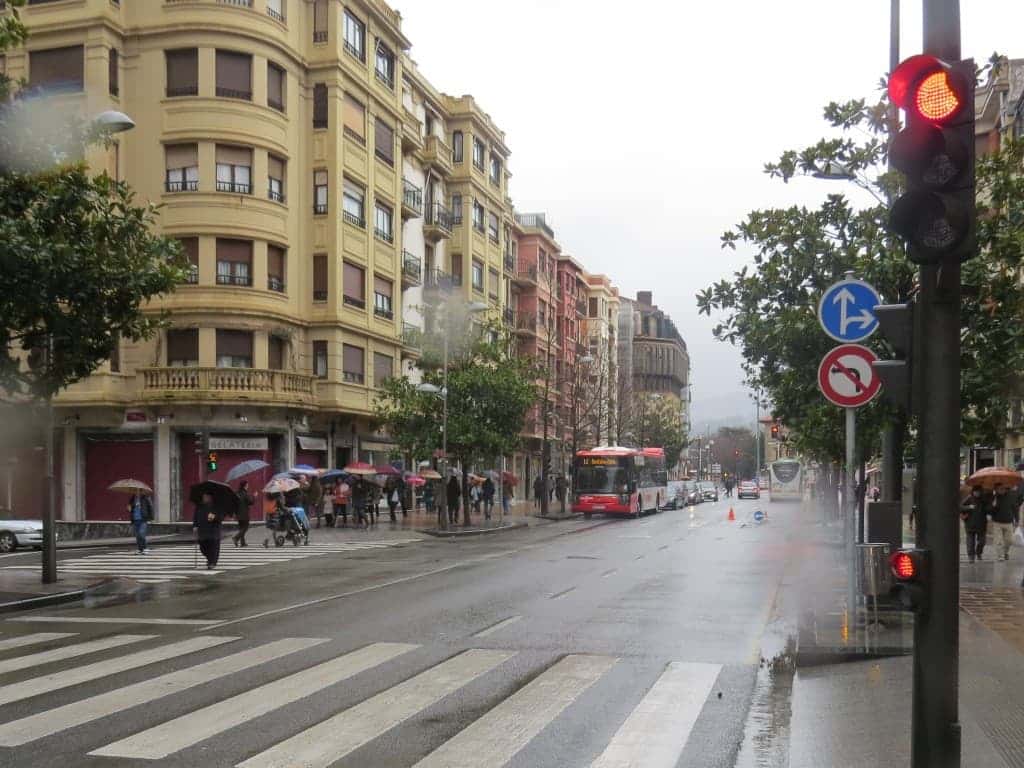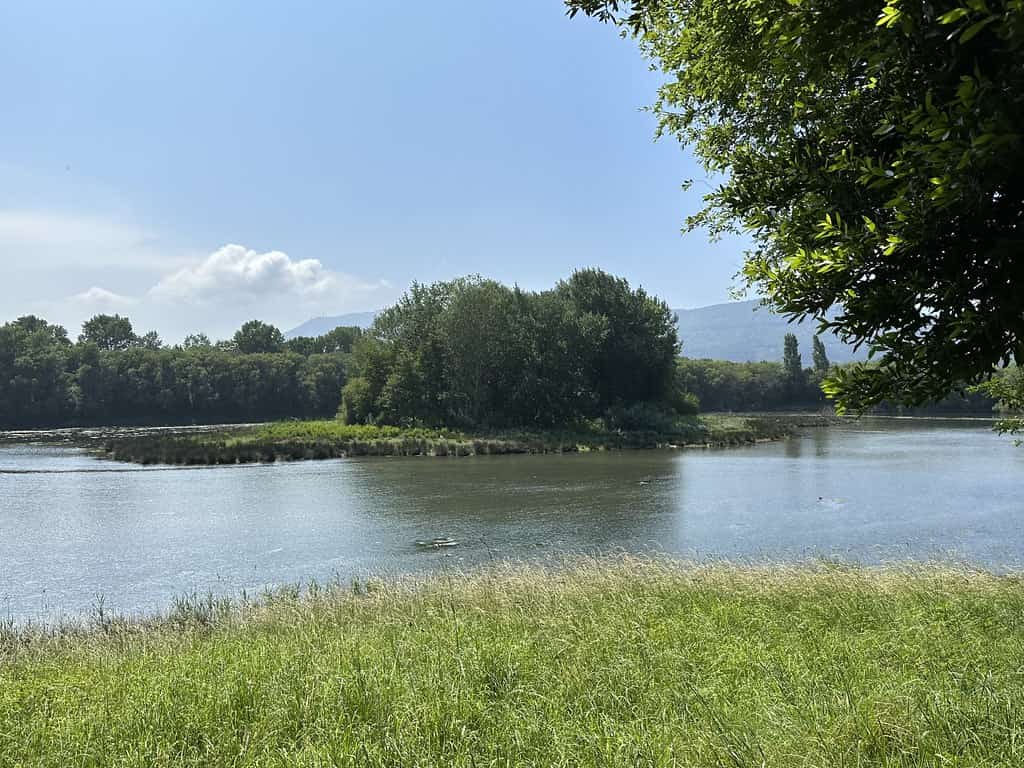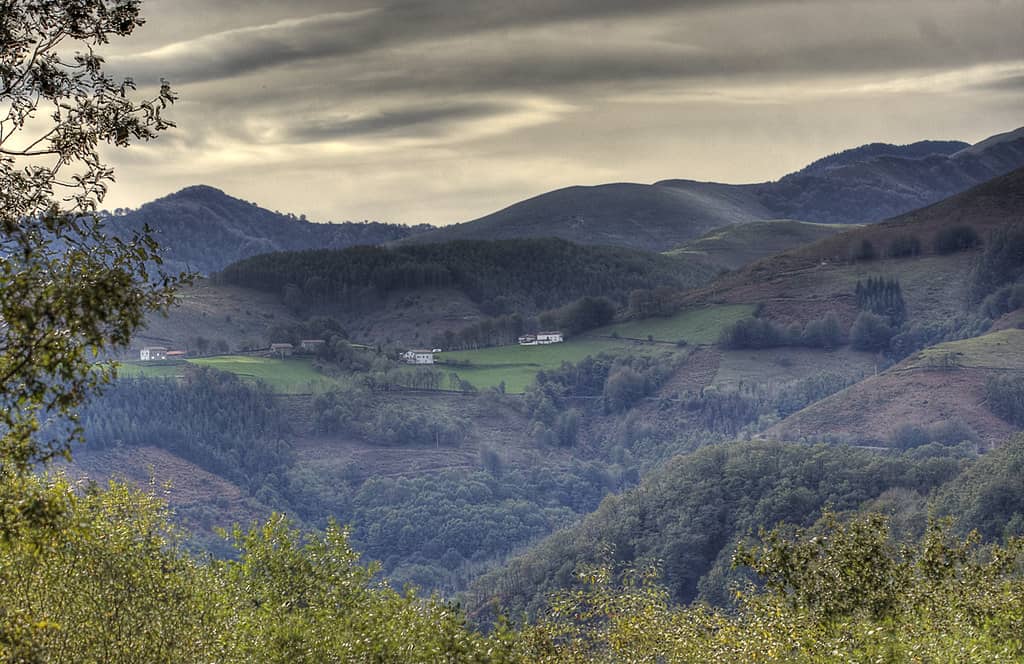
Irún, located near the border with France, serves as the starting point for pilgrims embarking on the Northern Way.
From its origins as a Roman settlement known as Oiasso, to its role as the starting point for one of the most spectacular routes of the Camino, it blends history, culture, and nature. Irún is not just a place of passage, but the origin of an unforgettable Camino experience.
For those who choose to begin their pilgrimage from here, this town offers the perfect balance between tradition and modernity. Its streets, monuments, and landscapes embody the spirit of the Jacobean routes, while its excellent connectivity and services make it easy to plan every detail before setting off.
If you’re thinking of starting your Northern Way from Irún, here’s everything you need to know to make the most of this initial stage.
Índice de contenidos
Importance of Irún as a Strategic Point in Northern Spain
Located on the banks of the Bidasoa River, this town has played an important role as a strategic point in northern Spain. Its border position with France gives it an essential connection for travellers, merchants, and pilgrims over the centuries.
Furthermore, Irún is a key transport hub, with excellent access by road, train, and air. Regardless of the chosen mode of transport, it facilitates the arrival of tourists and pilgrims who want to explore both the city and its surroundings. Its proximity to the sea and the Pyrenees makes it ideal for those seeking to combine nature, history, and culture.
Irún and the Camino de Santiago: Beginning of the Northern Way
Irún is known for being the starting point of the Camino de Santiago if you choose the Northern Way.
This historic route has its roots in the Middle Ages, when pilgrims from across Europe crossed the Franco-Spanish border to reach Santiago de Compostela. The town, located by the Bidasoa River, became a key stopping point for those embarking on this route due to its connection with France and the rest of Europe.
With its historic centre and modern services, it offers the perfect place to begin the adventure, preparing both body and spirit for the journey. In addition, here you can find numerous resources specifically designed for pilgrims. From hostels to information points, the town provides support for those who choose to start their journey here.
Reasons to Choose the Northern Way
Here are some reasons to opt for this route:
- Coastal landscapes and nature. Unlike the stages of the Camino from Ferrol, which primarily pass through rural areas, the Northern Way allows you to enjoy views of the Bay of Biscay, beaches, and cliffs. This proximity to the coast provides a visually enriching experience and a special connection with nature.
- Lower number of pilgrims. This route is less crowded than others, such as the Camino Inglés. This lower influx allows for a more peaceful and personal experience, ideal for those seeking introspection and moments of solitude during their pilgrimage.
- Cultural and gastronomic richness. Along the Northern Way, pilgrims pass through regions with a deep cultural and gastronomic heritage, such as the Basque Country, Cantabria, and Asturias. This contrasts with the route to Finisterre, which does not offer the same regional diversity in such a short stretch.
- Moderate physical challenge. Compared to the stages of the Primitive Way, known for their difficulty due to mountainous terrain and steep gradients, the Northern Way offers a moderate physical challenge. While there are some demanding stages, the altitude and difficulty are generally lower, making it more accessible to a wide variety of pilgrims.
- Infrastructure and Services. The Northern Way has improved its infrastructure in recent years, offering a wide range of accommodations and services for pilgrims. Although it does not have the density of options found on the Camino from O Cebreiro to Santiago, it allows for flexible planning and comfort during the journey.
- Connections with Other Routes. The Northern Way offers the possibility to link with other Jacobean routes, such as the Primitive Way in Oviedo. It allows pilgrims to personalise their journey according to their interests and available time. This flexibility is not as common on more linear routes, such as the Camino Inglés.
What to See in Irún

Here are some of the most notable points of interest that every visitor should know:
Hermitage of Santa Elena
Located in the historic centre, the Hermitage of Santa Elena is a site of great archaeological and spiritual significance. During its construction, remains of a Roman temple and a necropolis were found, highlighting the historical importance of the area.
The current hermitage, in Gothic style, houses an image of Saint Elena and is a stop for pilgrims on the Camino de Santiago.
Peñas de Aia Natural Park (Aiako Harria)

This natural park is the only granite massif in Gipuzkoa and extends through the municipalities of Irún, Oiartzun, and Hernani. With its impressive rock formations, lush forests, and hiking trails, it is a paradise for nature lovers.
From its summits, you can enjoy panoramic views of the surrounding area, including the Txingudi Bay and the Pyrenees. The park also hosts a rich biodiversity, being home to numerous species of flora and fauna.
Island of the Phesants
Located on the Bidasoa River, this small islet is known as the smallest condominium in the world, jointly administered by Spain and France. Historically, it was the site where the Treaty of the Pyrenees in 1659 was signed, ending the war between the two countries.
Although access to the island is restricted, it can be admired from the riverbanks and its historical and diplomatic significance can be appreciated.
Urdanibia Palace
This Renaissance building is an example of the town’s architectural heritage. Built in the 17th century, it stands out for its stone façade and ornamental details. Over the years, it has served various purposes and is now a symbol of the city’s historical legacy.
Its location in a natural setting adds an extra attraction for visitors interested in history and architecture.
Plaiaundi Ecological Park
This natural space, located at the mouth of the Bidasoa River, is a key point for birdwatching migratory species. With a wide variety of animals and plants, it offers trails and viewpoints that allow visitors to enjoy the biodiversity and unique landscapes of the area. It’s an ideal place for peaceful walks and to connect with nature in the midst of the city.
Oiasso Roman Museum
This archaeological museum displays findings from the ancient Roman city of Oiasso. Through its exhibits, visitors can learn about daily life, trade, and customs during the Roman era in the region. The museum also organises educational activities and workshops, making it a must-visit for those interested in ancient history.
Church of Our Lady of Juncal
Built in the 16th century, this church is one of the oldest temples in Irún. It stands out for its Gothic architecture and houses an image of the Virgin of Juncal, the patron saint of the city, dating back to the 12th century.
Recently, the church’s bell tower has been opened to the public. Visitors, after climbing its 167 steps, can enjoy stunning views of Txingudi Bay and the surrounding mountains.
San Juan Square and Irún Town Hall
The San Juan Square is the heart of the town and a meeting point for locals. In it, you will find the Town Hall, a building of notable architecture that has witnessed important events throughout Irún’s history. The square is also the venue for various cultural and festive activities, especially during local celebrations.
Colón Promenade
This avenue is one of the main thoroughfares of the town, known for its shops, cafes, and lively atmosphere. It is an ideal place for walking, shopping, and enjoying local cuisine at its many establishments. It also hosts events and fairs throughout the year, becoming a nerve centre of urban life.
Santiago International Bridge
This bridge connects Irún with the French town of Hendaye, symbolising the union between Spain and France. It is an important historical and current border crossing and offers picturesque views of the Bidasoa River. Crossing the bridge allows visitors to experience the transition between two cultures and landscapes in just a few minutes.
Local Cuisine
Irún’s cuisine is a reflection of the rich Basque gastronomic tradition. Visitors can delight in typical dishes such as fish stew and squid in its ink. Additionally, the city is known for its pintxos, small delicacies that can be tasted in the bars of the town centre, offering a unique culinary experience.
Local Festivals
Irún celebrates various festivals throughout the year, with the most notable being the Fiestas de San Pedro and San Marcial, held on the 29th and 30th of June. These celebrations include parades, music, and cultural events that reflect local traditions.
During Christmas, the city offers a full schedule of activities for all ages, including Christmas markets, ice skating rinks, and street performances.









